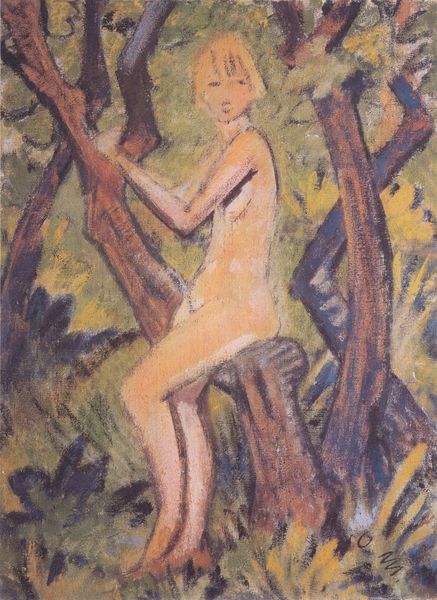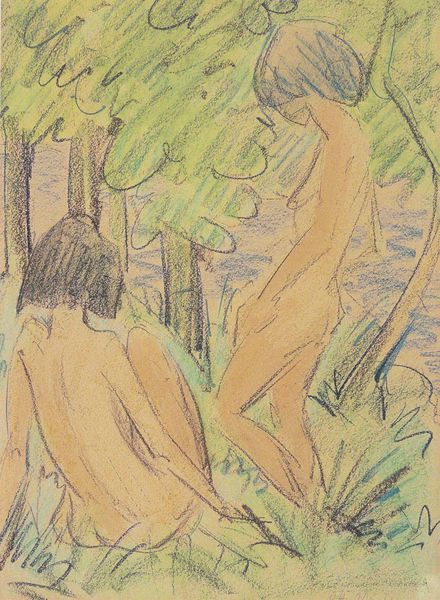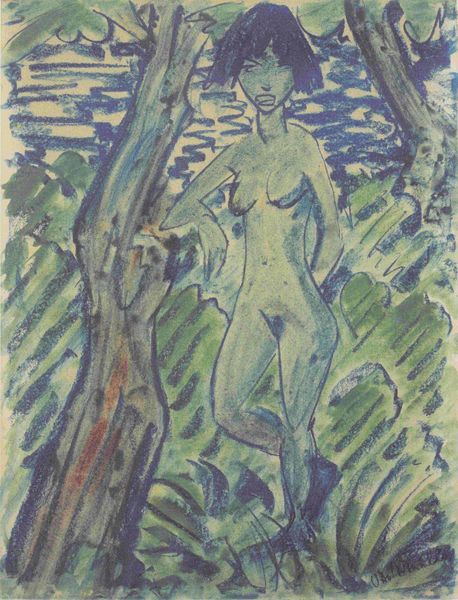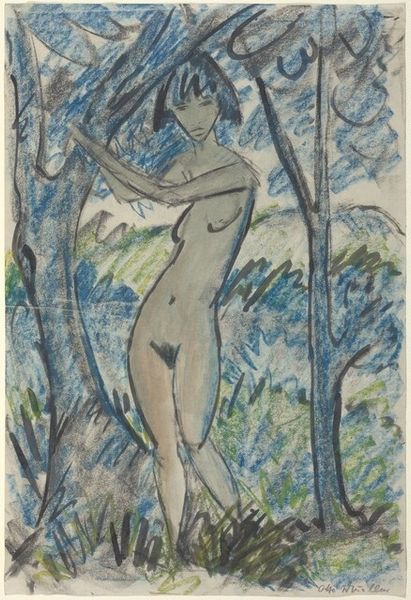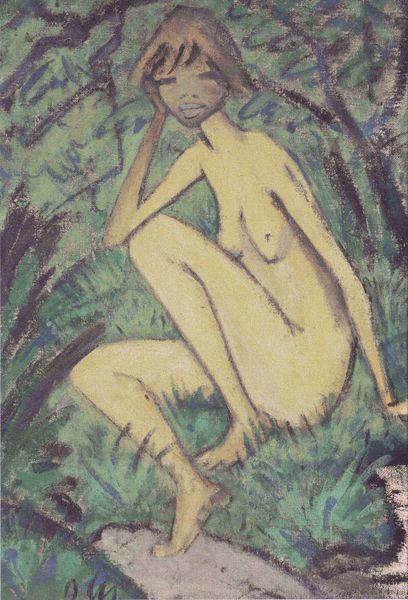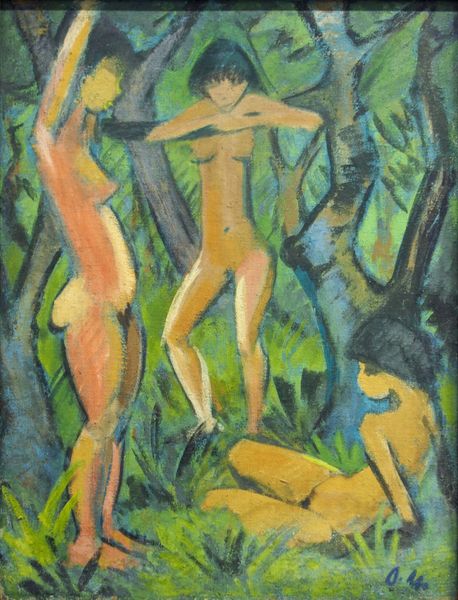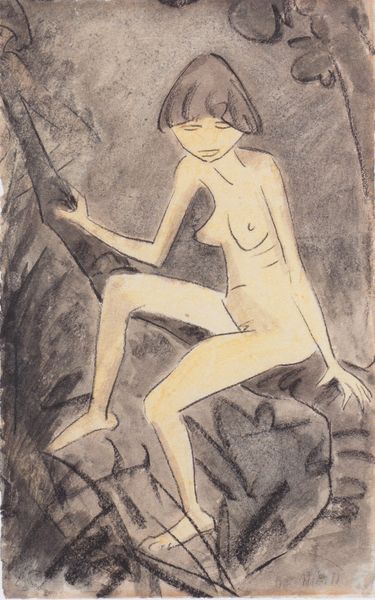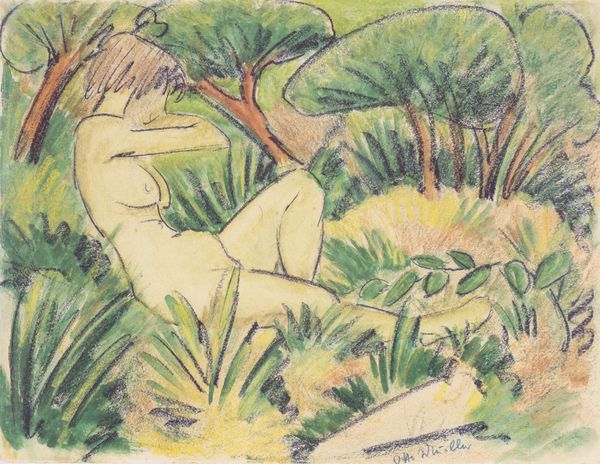
drawing, oil-paint, ink
#
portrait
#
drawing
#
ink drawing
#
oil-paint
#
landscape
#
german-expressionism
#
figuration
#
ink
#
expressionism
#
nude
#
watercolor
Dimensions: 50.3 x 70 cm
Copyright: Public domain
Editor: We are looking at Otto Mueller’s "Akt Im Wald," or "Nude in the Woods," created in 1923 using ink and watercolor. It's a deceptively simple composition, a solitary nude figure within a vaguely defined forest. The mood strikes me as pensive, maybe even melancholic. What's your initial read of this piece? Curator: It is striking how Mueller situates the figure not in a romanticized, classical Arcadia, but within a rawer, more psychologically charged landscape reminiscent of German Expressionism. Considering the social climate of post-World War I Germany, this portrayal carries significant weight. Editor: How so? Curator: Expressionism sought to portray the world through a subjective lens, often reflecting inner turmoil. Mueller, along with other artists of his time, challenged traditional academic notions of beauty and the idealized human form. In placing the nude within the forest, he removes the pretense of the classical and instead roots her in something altogether more disquieting. Note the almost harsh lines defining the trees, and the overall flattening of the picture plane, pushing against traditional perspective. Do you see that tension? Editor: I do. It's almost as if the figure is trapped, or perhaps deliberately hiding, within the woods. Is that sense of unease intentional, then? Curator: Intentionality is a difficult thing to prove definitively. However, given the historical context – the disillusionment following the war, the social and political instability – the artistic choices of angularity and starkness resonate with that broader sense of anxiety. What do you think this artwork suggests about the public role of art during this period? Editor: I hadn’t thought about it that way before. It shows the artist's critical reflection on humanity. Thanks, I now appreciate it so much more as a representation of this period! Curator: Absolutely! Thinking about the art as both a cultural artifact and reflection can certainly deepen one's understanding.
Comments
No comments
Be the first to comment and join the conversation on the ultimate creative platform.

